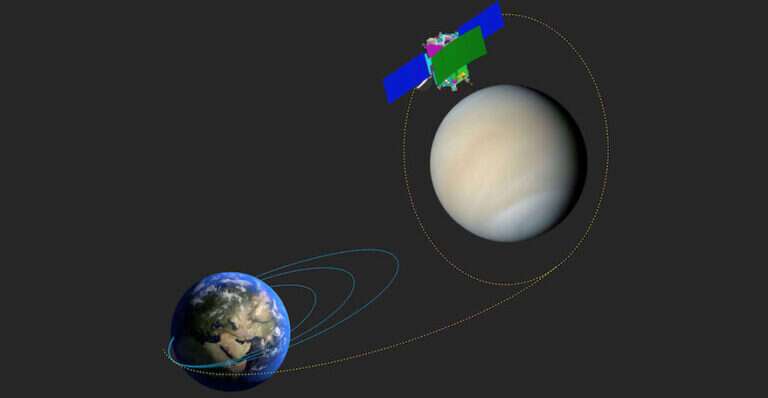
The Indian space agency intends to launch its orbiter into Venus’s Shukrayaan orbit at the end of 2024, which is more than a year later than planned, the ISRO scientist told the planetary science planning committee established by NASA on November 10.
Maria Antonita of the Indian Space Research Organization (ISRO) spoke in detail about the status of the mission to scientists who make up the new 10-year plan for NASA’s planetary science program. Shukrayaan will be India’s first mission to Venus and will study the planet for more than four years.
ISRO was keen to launch in mid- 2023 when it announced it would start work in 2018, but last week Antonita told members of the planning committee that delays related to the pandemic pushed Shukrayaan’s target launch date back to December 2024 with a reserve launch date around mid- 2026 (optimal launch windows to reach Venus are formed with a difference of about 19 months).
Antonita said Shukrayaan is currently scheduled to launch on India’s GSLV Mk II. However, she said the team is also evaluating the possible use of a more powerful GSLV Mk III rocket that will allow Shukrayaan to take more tools or fuel. According to her, a decision on the launch vehicle is expected in the next three to six months.
In its current configuration, the orbiter weighs about 2500 kg and will carry a scientific payload consisting of a radar with a synthesized aperture and other instruments.
After launching Shukrayaan, it will take several months to reach Venus, where it will enter a highly elliptical orbit measuring 500 by 60,000 kilometers around the planet. Next year, he will use air braking to reduce the orbit to 200 by 600 kilometers. This polar orbit will be the last used for scientific observations.
The main scientific goals of the mission are to map the surface and bowels of Venus, while studying the chemical composition of the planet’s atmosphere and interaction with the solar wind.
Shukrayaan will also carry a set of tools capable of performing spectroscopic observations in infrared, ultraviolet and submillimeter waves to study the atmosphere of Venus. The possibility of detecting phosphine in the upper atmosphere of Venus excites many scientists about the prospects of life there, although some scientists remain skeptical of this. According to Antonita, the presence of phosphine and other biomarkers in the upper atmosphere of Venus can be confirmed using an orbiter near-infrared spectrometer. The tool will also be used to locate and locate any active volcanism on Venus.
Over the past 30 years, only three spacecraft have entered orbit around Venus, but space agencies around the world are showing renewed interest in a second planet from the Sun.




